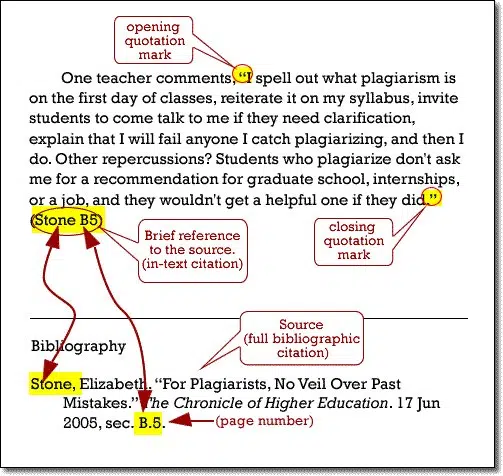Referencing a book in a paper is simpler than it seems. First, gather all necessary details like the author’s name, book title, publication year, and publisher. Place the author’s last name first in your citation, followed by the first name. Then, write the book title in italics and add the publication details. A proper reference list enhances your credibility and avoids plagiarism. Follow the steps to ensure your paper maintains academic standards.
How to Reference a Book in a Paper
Writing a paper often involves the extensive use of books for research. Knowing how to reference these books correctly is essential. A proper reference not only gives credit to original authors but also helps readers locate the sources. Additionally, if you’re curious about how to purchase books wholesale for your research or personal library, we’ve got you covered. Let’s delve into the comprehensive guide on how to reference a book in a paper.
Why Referencing is Important
Understanding the significance of referencing is the first step. Here are a few key reasons:
- Proper citations lend credibility to your work.
- Referencing helps avoid plagiarism, giving credit to original authors.
- It provides resources for readers to further explore the topic.
- It meets academic standards and expectations.
Choosing the Right Citation Style
Various citation styles exist, each with specific rules. The most common include:
- Often used in social sciences.
- Common in humanities.
- Used in history and some social sciences.
- Widely used across various subjects.
Research your paper’s requirements or ask your teacher to choose the correct style.
General Format for Book Referencing
Each citation style has its specifics, but generally, references for books include:
- Author’s name
- Year of publication
- Title of the book
- Publisher
- Place of publication
Let’s explore each citation style in detail.
APA Style
APA style is commonly used in social sciences. Here’s how to reference a book in APA format:
Author, A. A. (Year of Publication). Title of work: Capital letter also for subtitle. Publisher.For example:
Smith, J. (2020). Understanding Psychology: An Introduction. Pearson.MLA Style
MLA style is used mainly in humanities. The format for referencing a book is:
Author's Last Name, First Name. Title of Book. Publisher, Publication Date.For example:
Doe, Jane. Exploring Literary Theory. Cambridge University Press, 2018.Chicago Style
Chicago style provides two systems: Notes and Bibliography, and Author-Date. We focus on the Notes and Bibliography system here:
Author's First Name Last Name, Title of Book (Place of Publication: Publisher, Year of Publication).For example:
John Smith, Historical Perspectives on Modern Society (New York: Oxford University Press, 2019).Harvard Style
Harvard style is often seen in various fields. The format looks like:
Author's Last Name, First Initial(s). (Year). Title of Book. Edition (if applicable). Place of Publication: Publisher.For example:
Brown, A. (2015). Introduction to Economics. 2nd ed. London: Routledge.Formatting In-text Citations
Each citation style has specific rules for in-text citations. Here’s a quick guide for each:
- APA: (Author, Year)
(Smith, 2020) - MLA: (Author Page Number)
(Doe 23) - Chicago: (Author Year, Page Number)
(Smith 2019, 45) - Harvard: (Author Year, Page Number)
(Brown 2015, p. 12)
Referencing Edited Books
Edited books have different rules. Here’s how to reference them:
- APA:
Editor, A. A. (Ed.). (Year of Publication). Title of work: Subtitle. Publisher. - MLA:
Editor, First Name, ed. Title of Book. Publisher, Publication Date. - Chicago:
Editor’s First Name Last Name, ed., Title of Book (Place of Publication: Publisher, Year of Publication). - Harvard:
Editor’s Last Name, First Initial(s)., ed. (Year). Title of Book. Place of Publication: Publisher.
Referencing a Chapter in an Edited Book
When citing a chapter from an edited book, the format changes slightly:
- APA:
Author, A. A. (Year of Publication). Title of chapter. In Editor, B. B. (Ed.), Title of book (pp. xxx-xxx). Publisher. - MLA:
Author’s Last Name, First Name. “Title of Chapter.” Title of Book, edited by Editor’s First Name Last Name, Publisher, Publication Date, Page Numbers. - Chicago:
Author’s First Name Last Name, “Title of Chapter,” in Title of Book, ed. Editor’s First Name Last Name (Place of Publication: Publisher, Year of Publication), page numbers. - Harvard:
Author’s Last Name, First Initial(s). (Year). Title of chapter. In: Editor’s Initial(s). Last Name, ed., Title of Book. Place of Publication: Publisher, pp. Page numbers.
Referencing E-books and Online Books
With the rise of digital media, referencing e-books is also essential:
- APA:
Author, A. A. (Year of Publication). Title of work. Publisher. DOI/URL - MLA:
Author's Last Name, First Name. Title of Book. Publisher, Publication Date. URL. - Chicago:
Author’s First Name Last Name, Title of Book (Publisher, Year), DOI/URL. - Harvard:
Author’s Last Name, First Initial(s). (Year). Title of Book. Edition (if applicable). Place of Publication: Publisher. Available at: URL (Accessed: Date).
Common Mistakes to Avoid
Referencing books can sometimes be tricky. Avoid these common mistakes:
- Always double-check author names for accuracy.
- Make sure you reference the correct edition of the book.
- Ensure all necessary details like publisher’s name, publication year, and page numbers are included.
- Adhere to the specific guidelines of the citation style you are using.
Practical Examples and Practice
Practice makes perfect. Here are a few more examples for practice:
- APA:
Brown, A. B. (2016). Cognition and Perception. McGraw-Hill. - MLA:
Green, Thomas. The Art of Thinking. Harvard University Press, 2017. - Chicago:
Emily White, Philosophical Foundations (San Francisco: City Lights Books, 2018). - Harvard:
Johnson, P. (2019). Introduction to Sociology. 3rd ed. New York: Penguin Books.
Using Reference Management Tools
Reference management tools can simplify the referencing process:
- Helps manage and insert citations into your paper.
- Free tool that collects, organizes, and cites your research sources.
- Reference manager and academic social network.
- Online tool for creating citations in various formats.
Tips for Efficient Referencing
To ensure your references are accurate and complete:
- Begin collecting references from the start of your research.
- Use tools or a system to keep track of your references.
- Always verify details for accuracy.
- Stick to the specified citation style.
Referencing books in a paper may seem daunting at first, but with practice and the right tools, it becomes second nature. Understanding different citation styles and formats ensures your work is credible and meets academic standards. Keep practicing, and soon, referencing will be a breeze!
Frequently Asked Questions
How do you format a book reference in APA style?
When referencing a book in APA style, include the author’s last name, first initial(s), publication year, book title in italics, and publisher. For example: Smith, J. (2020). The Book Title. Publisher.
What information do you need to cite a book in MLA format?
In MLA format, a book citation should include the author’s full name, book title in italics, publisher, and year of publication. For example: Smith, John. The Book Title. Publisher, 2020.
How do you reference an edited book with multiple authors in Chicago style?
In Chicago style, you should list all contributing authors, editors, the publication year, book title in italics, and publisher. An example format is: Smith, John, and Jane Doe, eds. The Book Title. Publisher, 2020.
How should you reference a book chapter in APA style?
To reference a book chapter in APA style, include the chapter author’s last name, first initial(s), publication year, chapter title, editors’ initials and last names, book title in italics, page range, and publisher. For example: Smith, J. (2020). Chapter Title. In A. Editor & B. Editor (Eds.), Book Title (pp. 123-145). Publisher.
How do you cite an e-book in MLA format?
In MLA format, an e-book citation should include the author’s full name, title of the book in italics, e-book edition if available, publisher, publication year, and the URL or DOI. For example: Smith, John. The Book Title. E-book ed., Publisher, 2020, www.website.com.
Final Thoughts
In conclusion, knowing how to reference a book in a paper ensures your work maintains academic integrity and credibility. Always include the author’s name, publication year, book title, and publisher. Follow the specific citation style required, whether it’s APA, MLA, or Chicago. Double-check for accuracy to avoid plagiarism. By paying attention to these details, you can effectively reference a book in a paper, enhancing the quality and reliability of your research.

